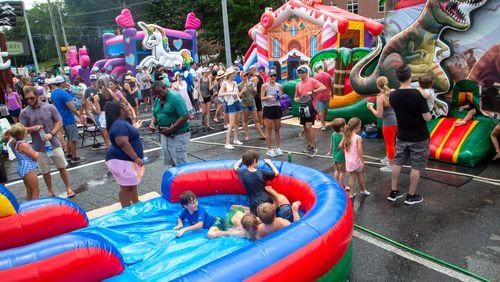Bounce houses, those springy, inflatable play structures that are popular to rent for birthday parties and other children’s events, can be lethal on windy days, even in conditions assumed to be safe, a new study led by the University of Georgia found.
The researchers determined that 28 people died and at least 479 were injured in more than 130 weather-related bounce house accidents worldwide since 2000, according to UGA.
“What could go wrong? The answer is that it could blow away in winds that are not anywhere near severe levels. Some of these cases were in purely clear skies,” John Knox, lead author of the study and a geography professor in the Franklin College of Arts and Sciences, said in a university statement.
Those documented incidents were on top of an estimated 10,000 U.S. emergency room visits for injuries such as broken bones, muscle sprains and concussions.
In Southern California, a house with a boy inside was lofted into the middle of a highway, according to Thomas Gill, second author on the paper and a professor of environmental science at the University of Texas at El Paso. In another incident, an empty structure struck a bystander.
More than one-fifth of the incidents occurred at wind speeds below those deemed unsafe by the American Society for Testing and Materials. The organization’s standards are cited by bounce house regulations in 19 states. They set a maximum wind gust speed of 25 miles per hour unless the bounce house is secured by a professional engineer.
The researchers spent a decade searching for wind-related incidents, using resources such as Google. They then analyzed weather conditions. They gathered the information in a website. Their study was recently published online in the Bulletin of the American Meteorological Society.
The upshot? Follow basic precautions, securely staking bounce houses to the ground and weighing them down with sandbags. And watch out for wind.







